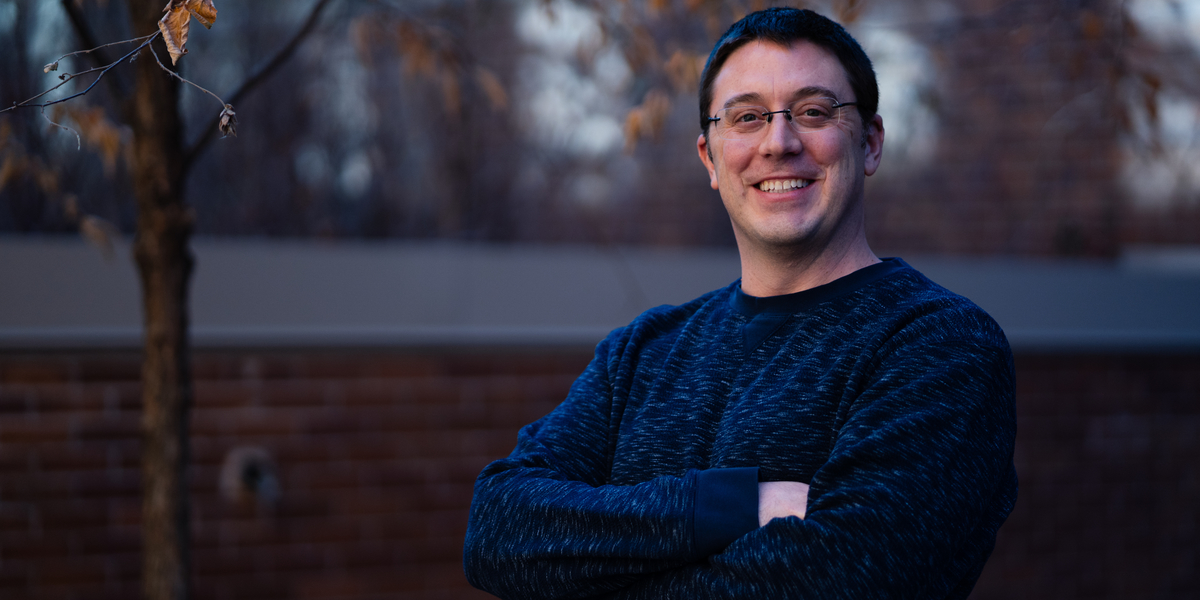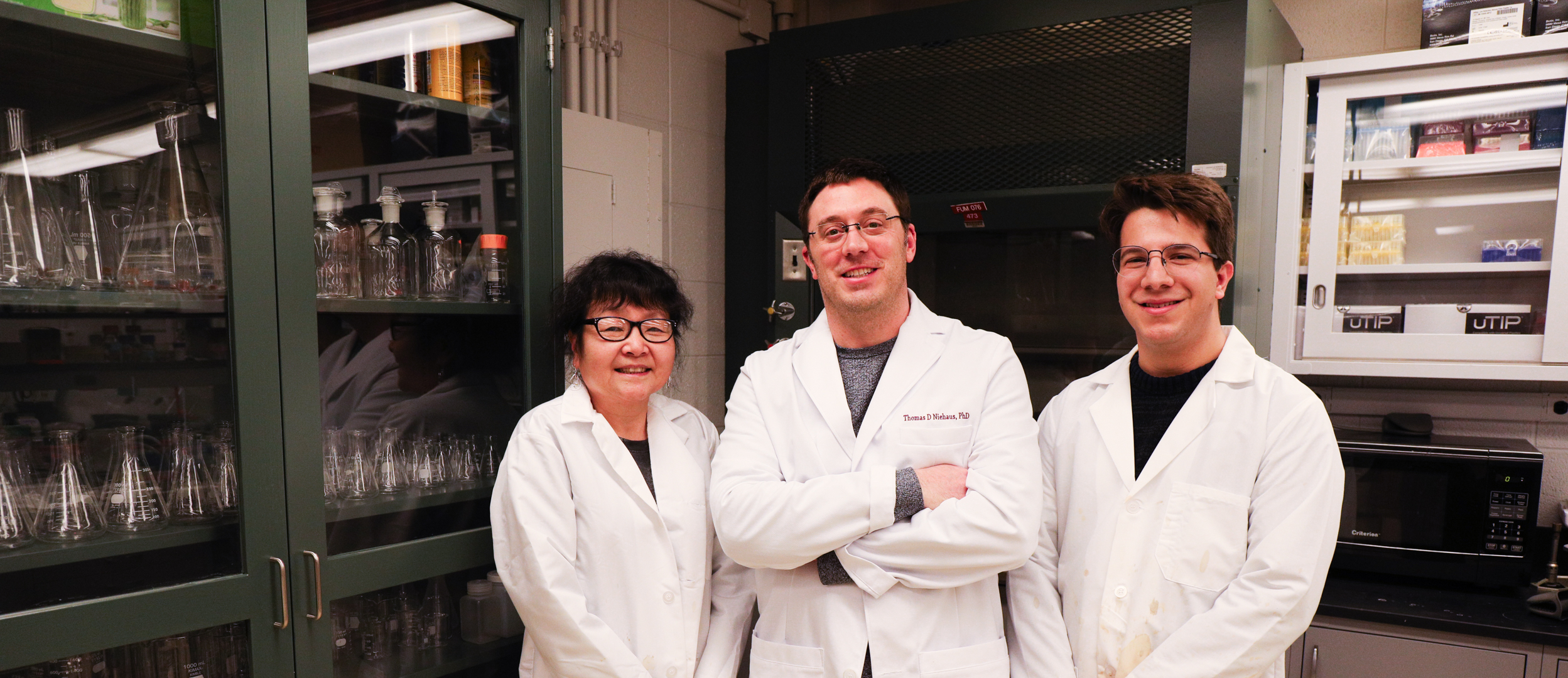
As Tom Niehaus rushed a cow heart from the campus barn to his lab across the street, its cells were quickly dying. Through the doors, up the elevator and down the hall, Niehaus was on a mission to send the heart – packed fresh on ice – swirling through a centrifuge. It raised some eyebrows.
“My colleagues thought I was crazy,” says Niehaus, an assistant professor in the plant and microbial biology department. “I’m a plant scientist.”
Nonetheless, Niehaus and his team used the cow heart to identify a critical enzyme in a metabolic pathway shared by both plants and animals. The pathway, called the Krebs cycle, is essential for transforming resources into usable energy. Without the enzyme Niehaus and his team discovered — a specialized protein called OAT1 — the Krebs cycle fails.
It’s a big deal because our scientific concept of the pathway was considered complete until about a decade ago. “Scientists thought we’d learned everything we needed to know about the Krebs cycle,” says Niehaus, who notes students have been taught to memorize the pathway in foundational biology courses for the better part of a century. “Like, it’s old news, right? But even in 2024, we’re publishing about a new enzyme that’s crucial to the pathway’s functioning.” The team’s publication was recently released in Nature Communications.
While the enzyme isn’t part of the central pathway that generates energy, it functions as part of the Krebs cycle’s essential “repair kit.” The cycle inherently produces toxic byproducts and working without repair mechanisms can be fatal. When Niehaus and his team knocked out the gene for OAT1 in a strain of E. coli, the colonies of bacteria suffered severely. In humans, a defunct Krebs cycle has been linked to metabolic disease.
“Without our newly identified enzyme, another critical enzyme in the Krebs cycle slowly poisons itself,” says Niehaus, who says that OAT1 prevents a toxic compound from building up in cells and inhibiting healthy aerobic metabolism.
He credits his suspicions about the enzyme (and the cow heart) to a Russian study he unearthed from the early eighties. “The Russian scientist, Andrey Vinogradov, purified an enzyme in a cow heart that could convert a toxic byproduct of the Krebs cycle back into something useful,” says Niehaus. “It was the golden age of biochemistry. Scientists were just crushing things up looking for enzymes.” But Dr. Vinogradov didn’t have a sequence for the enzyme or a modern scientific context that could link it to an essential repair pathway. Enter Niehaus.
“We were specifically looking for enzymes that could fix mistakes in the Krebs cycle,” says Niehaus of why he first sought out the study. “So we recognized it and said ‘oh my God, that seems like it might actually be really important.’” When he couldn’t identify the enzyme using an online database of cow genes, Niehaus followed the lead of Dr. Vinogradov to determine if it had broader implications for metabolism.
To Niehaus’s surprise, the enzyme he isolated from the cow heart had already been identified. OAT1 belongs to a family of well-documented proteins whose function was unknown — until now. The surprising success makes Niehaus excited to explore other uncharacterized enzymes. He also hopes he can connect with Dr. Vinogradov to thank him for his research and inform him his study hadn’t led to a dead end.
“[OAT1] is in every living thing,” says Niehaus. “Which makes sense, because the Krebs cycle is one of the most universal pathways of all life.” — Adara Taylor
